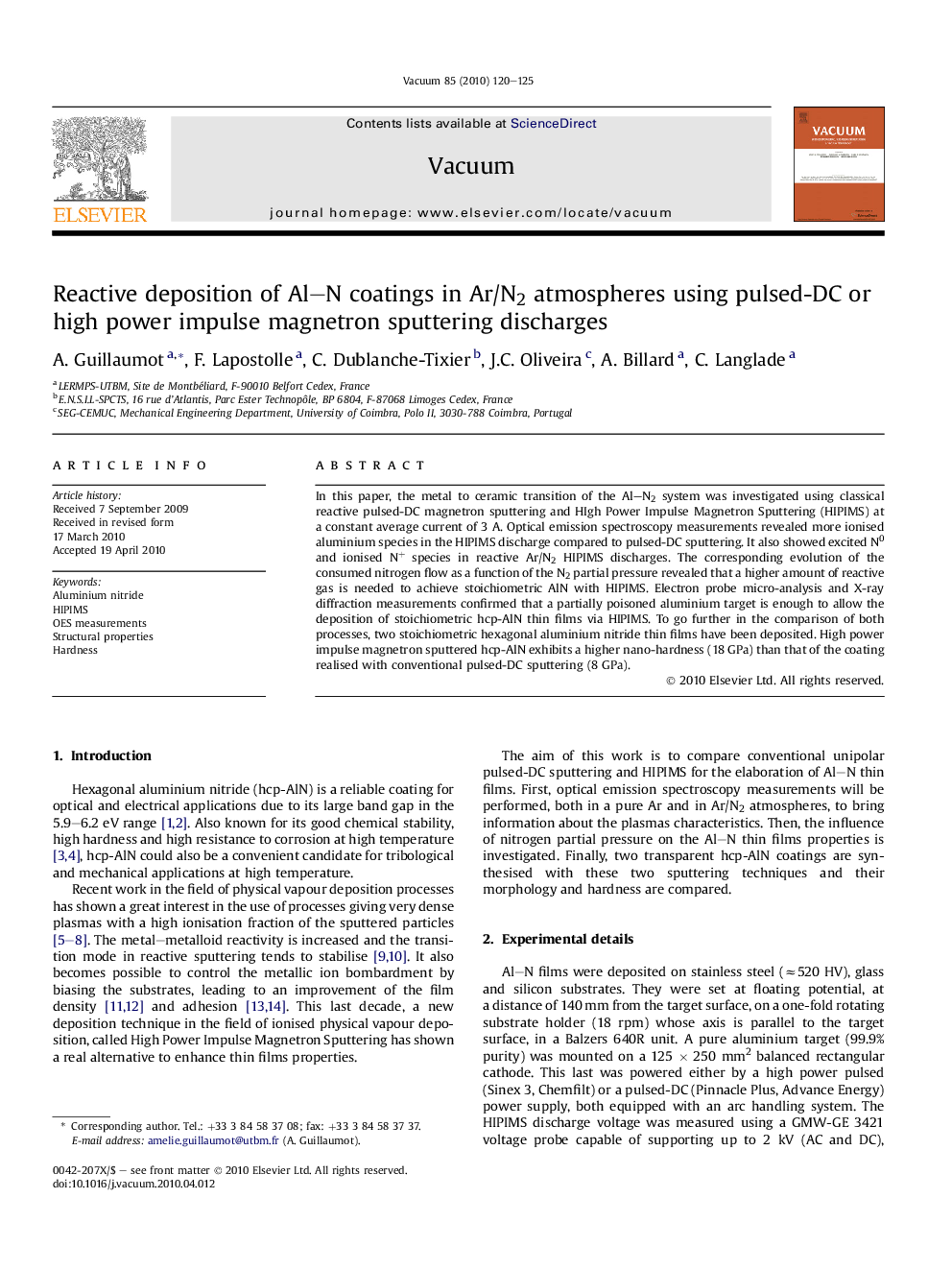| Article ID | Journal | Published Year | Pages | File Type |
|---|---|---|---|---|
| 1691097 | Vacuum | 2010 | 6 Pages |
In this paper, the metal to ceramic transition of the Al–N2 system was investigated using classical reactive pulsed-DC magnetron sputtering and HIgh Power Impulse Magnetron Sputtering (HIPIMS) at a constant average current of 3 A. Optical emission spectroscopy measurements revealed more ionised aluminium species in the HIPIMS discharge compared to pulsed-DC sputtering. It also showed excited N0 and ionised N+ species in reactive Ar/N2 HIPIMS discharges. The corresponding evolution of the consumed nitrogen flow as a function of the N2 partial pressure revealed that a higher amount of reactive gas is needed to achieve stoichiometric AlN with HIPIMS. Electron probe micro-analysis and X-ray diffraction measurements confirmed that a partially poisoned aluminium target is enough to allow the deposition of stoichiometric hcp-AlN thin films via HIPIMS. To go further in the comparison of both processes, two stoichiometric hexagonal aluminium nitride thin films have been deposited. High power impulse magnetron sputtered hcp-AlN exhibits a higher nano-hardness (18 GPa) than that of the coating realised with conventional pulsed-DC sputtering (8 GPa).
